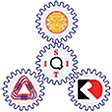What Is Data Integration and Common Patterns
When you need to turn scattered data into clear, actionable insight, data integration becomes essential. You’re not just moving numbers around—you’re building systems that work together, making sure everyone’s working from the same version of the truth. But with so many sources and tools out there, it’s easy to get lost. Before you settle on an approach, you’ll want to understand the most effective patterns for bringing it all together.
Understanding Data Integration
Data integration is the process of combining data from various sources to create a coherent and accessible view, which facilitates more informed decision-making and comprehensive analysis.
This process typically involves ETL (extraction, transformation, and loading), which ensures that data is systematically organized and prepared for analytical purposes.
The quality of data is paramount and hinges on the implementation of rigorous standards and automated workflows. Such measures are crucial in establishing reliability in the insights derived from the data.
As organizations encounter a significant increase in data volume, often across multi-cloud environments, automation plays a critical role in maintaining efficient and reliable data integration processes.
Recognizing and understanding common integration patterns is essential for effectively addressing the diverse requirements of data integration. By mastering these principles, organizations can convert complex and dispersed datasets into actionable intelligence, thereby enhancing their operational capabilities.
Key Data Integration Patterns
As organizations adopt a wider range of data sources, it's crucial to understand common data integration patterns. These patterns can help streamline workflows and enhance the reliability of outcomes.
One common pattern is data migration, which involves transferring data from one or more source systems to target systems in a single event. This process often includes data transformation and validation to ensure data quality and compatibility.
Another significant pattern is broadcast integration, which allows for the efficient propagation of real-time data updates from a single source to multiple target systems. This method can improve responsiveness and ensure all stakeholders have access to the most current information.
Bi-directional synchronization is also important, as it enables two platforms to exchange and update information continuously, thereby maintaining consistency across systems.
Aggregation is another pattern where data from multiple sources is centralized and processed to provide unified insights. This can facilitate better analysis and decision-making by consolidating disparate information.
Lastly, patterns utilizing correlated data focus on relevant intersections among data sets, which streamlines synchronization processes and enhances performance by minimizing unnecessary overhead and data duplication.
Understanding these integration patterns is fundamental for organizations looking to optimize their data management strategies and improve operational efficiency.
ETL, ELT, and Foundational Integration Approaches
When integrating information across multiple platforms, two foundational approaches are commonly recognized: ETL (Extract, Transform, Load) and ELT (Extract, Load, Transform).
ETL involves extracting data from various source systems, transforming it to enhance data quality and integrity, and subsequently loading it into a data warehouse. This method is particularly suited for historical data analysis and scenarios involving legacy systems. The transformation phase allows for data cleansing, aggregation, and formatting, which can improve usability and analytical insights.
In contrast, ELT adopts a different sequence. It first loads raw data directly into a modern data warehouse before performing transformations. This approach takes advantage of the processing power of contemporary data warehouses, enabling scalable integration and facilitating real-time data analysis. ELT is often favored in situations where speed and flexibility are paramount, as it allows for more agile data handling.
Both ETL and ELT contribute significantly to effective data governance frameworks. They ensure consistency, compliance, and centralized data management, which are essential for informed decision-making in organizations. Each approach has its advantages and drawbacks, making the choice between them dependent on specific business requirements and data architecture.
Real-Time and Event-Driven Data Integration
Modern organizations can gain immediate insights and respond effectively to emerging trends by implementing real-time data integration strategies. One significant method is Change Data Capture (CDC), which allows organizations to monitor and identify updates to data without the need to rescan entire datasets. This method enhances efficiency in data processing and minimizes resource usage.
Data streaming is another critical component of real-time data integration, as it facilitates the continuous flow of information across various systems. This capability supports instantaneous analysis and decision-making, which is particularly beneficial in situations such as fraud detection, where timely responses are essential.
API integration further enhances data exchange by allowing applications to communicate efficiently using standardized protocols. This ensures that data can be shared rapidly and reliably between different systems without significant delays.
Additionally, event-driven architecture plays a vital role in real-time data integration. It enables systems to trigger data flows based on specific events, thus allowing for immediate responses rather than relying on continuous polling.
Advanced Data Management Strategies
As organizations increasingly manage diverse and distributed data, implementing advanced management strategies is crucial for ensuring data integrity, agility, and accessibility. One effective approach is Data Consolidation, which involves integrating various data sources into a centralized repository. This streamlining process not only enhances data integration but also establishes a single source of truth, aiding in decision-making and reporting.
Data Propagation is another strategy that facilitates either real-time or scheduled synchronization of data across systems, which is vital for maintaining backup and consistency. This technique is essential for organizations that require up-to-date information across different platforms.
Data Federation and Data Virtualization are methodologies that allow for real-time access to distributed data without the need for physical movement. This minimizes redundancy and optimizes the use of existing data sources by providing a unified view while keeping the data in its original location.
Adopting API-led Connectivity enables organizations to create modular and agile integrations, allowing for more flexible development and easier maintenance of data connections. Additionally, Event-Driven Architecture can be implemented to facilitate timely updates and responses to changes in data, ensuring that information remains current and relevant.
These advanced data management strategies contribute to the development of seamless and adaptive data environments, which are essential for organizations to navigate the complexities of modern data landscapes effectively.
Conclusion
By now, you’ve seen that data integration is essential for making sense of information scattered across different systems. When you use patterns like migration, broadcast, or bi-directional sync, you ensure your data’s always consistent and accessible. Embracing approaches like ETL, real-time, and event-driven integration helps you turn raw data into valuable insights. Stay proactive with these strategies, and you’ll empower your business to make smarter, faster decisions based on a unified view of your data.















